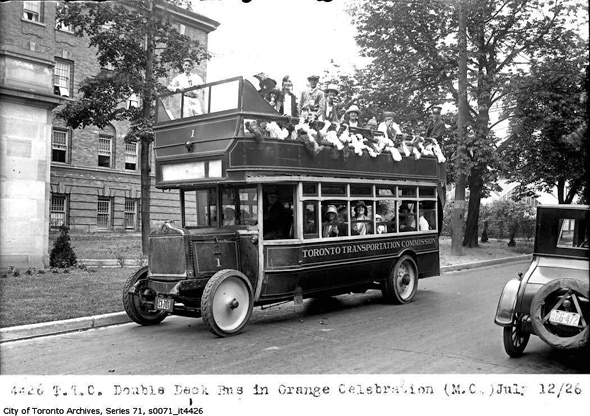 Not so long ago we published a post called 10 quirky things you might not know about Toronto,
which highlighted various urban oddities and pseudo-secrets. The TTC
makes two appearances on that list - in the form of the rarely discussed
Lower Queen Station and the Cold War-era proposal that subway tunnels be used as makeshift nuclear fallout shelters - but that's really only the tip of the iceberg when it comes to our transit commission. We've already posted a brief history of the TTC and tracked the evolution of streetcars, buses, and subways,
which collectively make for an interesting peek at the story of public
transit in Toronto. This list, on the other hand, is reserved for the
semi-hidden elements of the TTC story, those quirky bits of information
that will give you something interesting to think about the next time
you're caught in a rush hour delay on the verge of a panic attack.
Not so long ago we published a post called 10 quirky things you might not know about Toronto,
which highlighted various urban oddities and pseudo-secrets. The TTC
makes two appearances on that list - in the form of the rarely discussed
Lower Queen Station and the Cold War-era proposal that subway tunnels be used as makeshift nuclear fallout shelters - but that's really only the tip of the iceberg when it comes to our transit commission. We've already posted a brief history of the TTC and tracked the evolution of streetcars, buses, and subways,
which collectively make for an interesting peek at the story of public
transit in Toronto. This list, on the other hand, is reserved for the
semi-hidden elements of the TTC story, those quirky bits of information
that will give you something interesting to think about the next time
you're caught in a rush hour delay on the verge of a panic attack.The TTC once had double decker buses
Back in the 1920s, the TTC fleet sported a few double decker buses, which made for quite the open-air experience on the top level. These buses never did catch on in any meaningful sense, and sightings of them vanish in the Toronto Archives by the 1930s. What did stay on Toronto streets for much longer were the TTC trolley buses, which first made an appearance in the '20s but were introduced full scale back in 1947 and stayed on Toronto streets until the early 1990s.
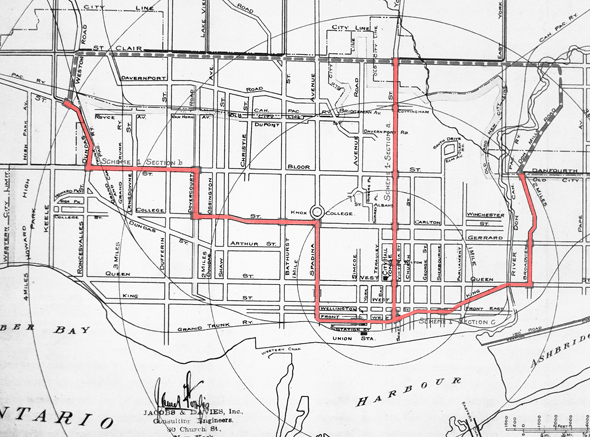 The original plan for the subway called for three lines
The original plan for the subway called for three linesAlthough Toronto didn't get a subway until 1954, there was already talk of building underground rail back in 1910. As part of a study of Toronto's transportation infrastructure, New York engineering firm Jacobs and Davies outlined a subway route for Toronto that consisted of three distinct lines: one in the west running from Dundas and Keele, a central line up Yonge to St. Clair, and an eastern route starting at Broadview and Danforth. After initial construction was complete, a connecting line across St. Clair could be built to tie the whole system together. The plan was killed by R.C. Harris in 1915, who argued that Toronto didn't need a subway, but rather more semi-rapid transit.
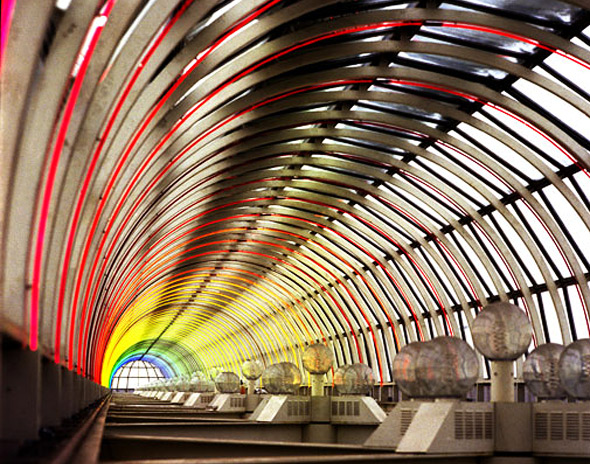 Yorkdale Station once had a rainbow roof
Yorkdale Station once had a rainbow roofWhen the Spadina Line opened in 1978, public art was a major feature of the new subway stations, none more spectacular than Michael Hayden's Arc en ciel at Yorkdale, which erupted in a multicoloured pulse as trains entered the station. The installation was ultimately removed in the mid 1990s after water damage to the tubing that lined the station roof was deemed too expensive to repair. It's possible that the rainbow might return, but we're not holding our breath.
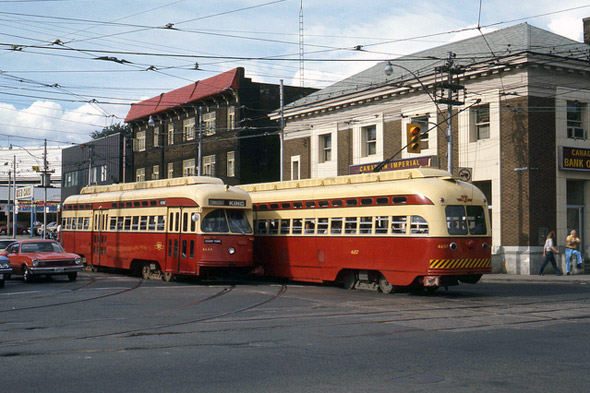 The TTC planned to abandon streetcars in the 1970s
The TTC planned to abandon streetcars in the 1970sToronto is one of just a few major cities with its streetcar network (largely) intact. It's a good thing, too - the TTC was once actively engaged in tearing out its surface rail lines and came very close to killing them altogether The TTC's streetcar abandonment policy, were it allowed to finish as planned in the 1980s, would have slowly mothballed all of Toronto's surface rail routes with the arrival of new subway lines. The Yonge streetcar was scrapped in 1954 and the Bloor-Danforth line met the same fate in 1966. Sherbourne, Dovercourt, Lansdowne, Spadina, Rogers Road, Weston Road and Spadina (since revived) all had their tracks removed before Streetcars for Toronto, a citizen-led group of activists, managed to halt the plan for good.
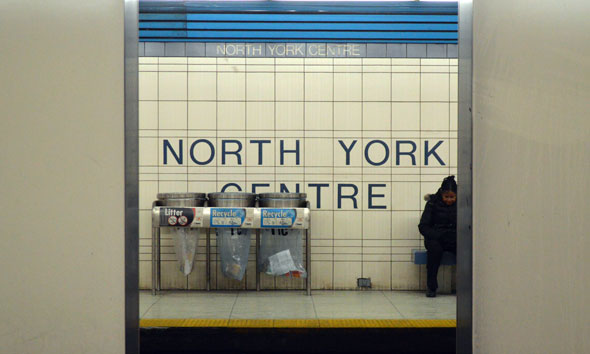 North York Centre was added after the subway already went to Finch
North York Centre was added after the subway already went to FinchUnlike the riders at many of Toronto's subway stations, users of North York Centre don't see much of their fellow straphangers - a thick support wall with narrow gaps separates the north and southbound platforms. The wall harks back to the time when the subway bypassed the area completely. The station was added 1987, dug out and inserted between Finch and Sheppard, more than a decade after the Yonge line reached its current terminus. While ugly, the bulky centre wall keeps odd station structure stable.
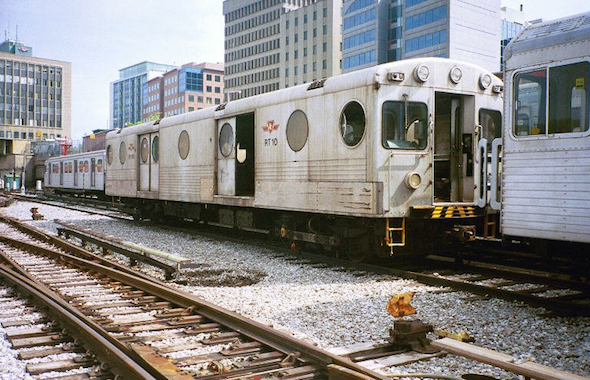 There used to be a garbage train
There used to be a garbage trainThe least glamorous job on the subway belonged for several years to a little train nicknamed Tokyo Rose. The distinctive car with its circular windows was bought from Nippon Sharyo, a Japanese train manufacturer, in the 1960s and converted into a moving trashcan. A team of TTC workers would ride on the train, tossing bags from each station into the bare metal interior (all the better for hosing down.) Other converted subway cars shared garbage detail with Tokyo Rose until the TTC halted its in-house collection in 2000 following a fire at Old Mill station.
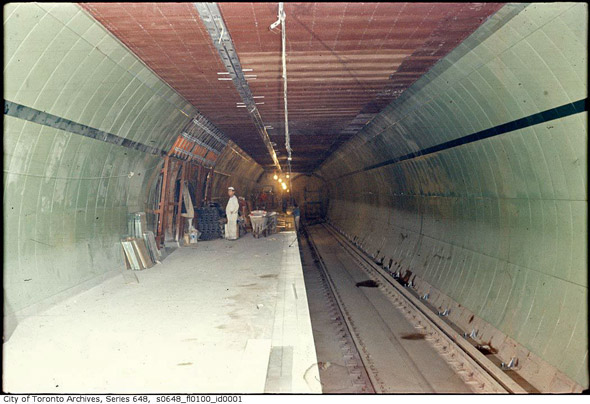 The TTC had different names in mind for some stations
The TTC had different names in mind for some stationsWhen the Bloor-Danforth line was still in the planning stages, two stations had working titles that were different to what ended up on the official map. Dundas West was "Vincent" after nearby street erased by The Crossways development and Spadina was known as "Lowther" on paper before the arrival of its Spadina line counterpart. In the 1980s, the TTC seriously considered renaming St. Patrick "Art Gallery" after the nearby AGO. The new name would have neatly bookended Museum station but was eventually dropped after a public outcry.
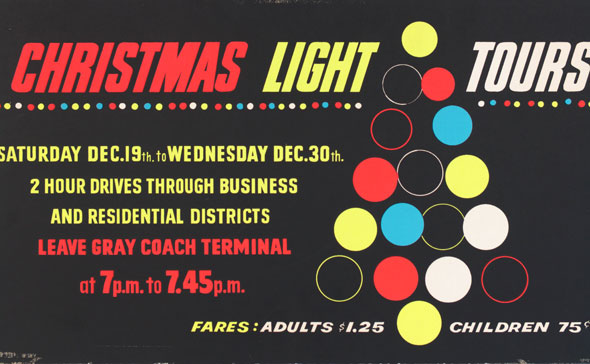 The TTC used to offer Christmas Light tours
The TTC used to offer Christmas Light toursEvery festive season crowds of passengers would gather at the coach terminal on Dundas in eager anticipation for a tour of the city's Christmas illuminations. The two-hour special bus service took in the best of the downtown lights as well as those in residential neighbourhoods. The TTC, which was generally more festive in the 60s and 70s, also sold commemorative token holders and ticket books over Christmas.
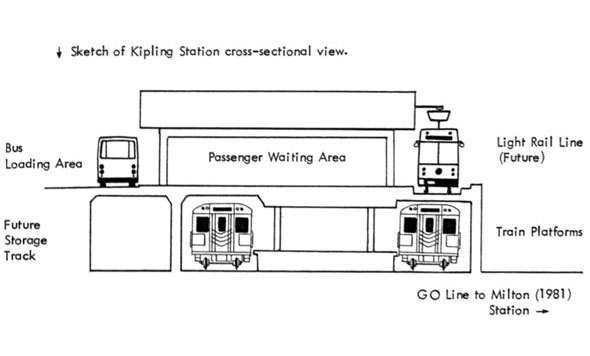 Etobicoke almost had its own RT line
Etobicoke almost had its own RT lineStand on the upper level of Kipling station opposite the bus bays and look out the window. If the TTC's expansion plans had panned out a little differently, a white ICTS train identical to the Scarborough RT might be arriving right now, releasing passengers from all over north Etobicoke into the subway. The proposed line never got beyond the planning stage but it would have likely used the Kipling hydro corridor to reach Pearson airport and York University with stops at Burnhamthorpe Road, Rathburn Road, Eglinton Avenue, Highway 401/427, Islington Avenue, Weston Road and Highway 400, according to planner Scott Haskill.
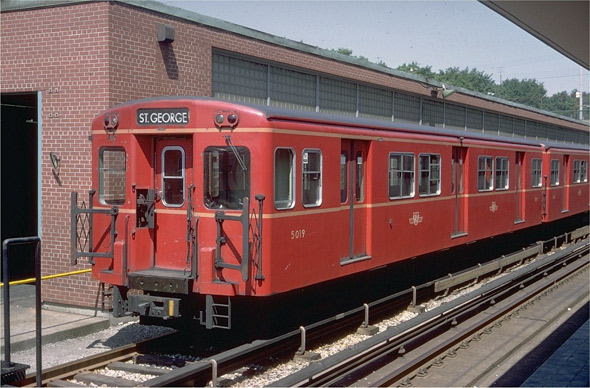
Where did the term "Red Rocket" come from?
Sorry to disappoint, but there are multiple theories on this one. Some trace the etymology to the introduction of the original red Gloucester subway cars in 1954, while others link it to the PCC streetcars (which were a maroon-ish red). Still others link the term to the Peter Witt streetcars (they were painted red), which far outdate the subway system. Thanks to Transit Toronto, we know that the term was not officially adopted by the TTC in marketing materials until the 1980s, but the origins of its unofficial usage are more difficult to pin down.
Please share this
No comments:
Post a Comment